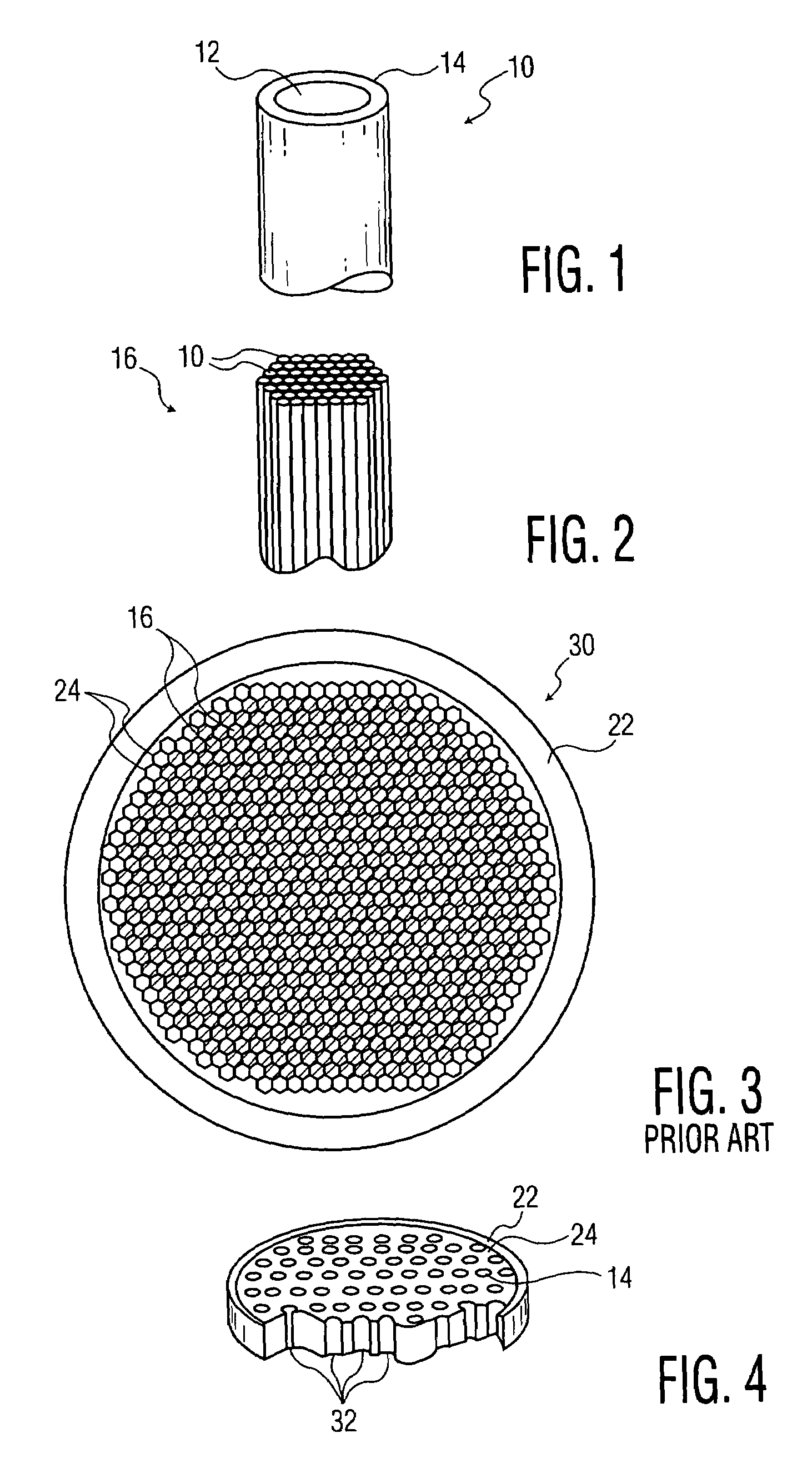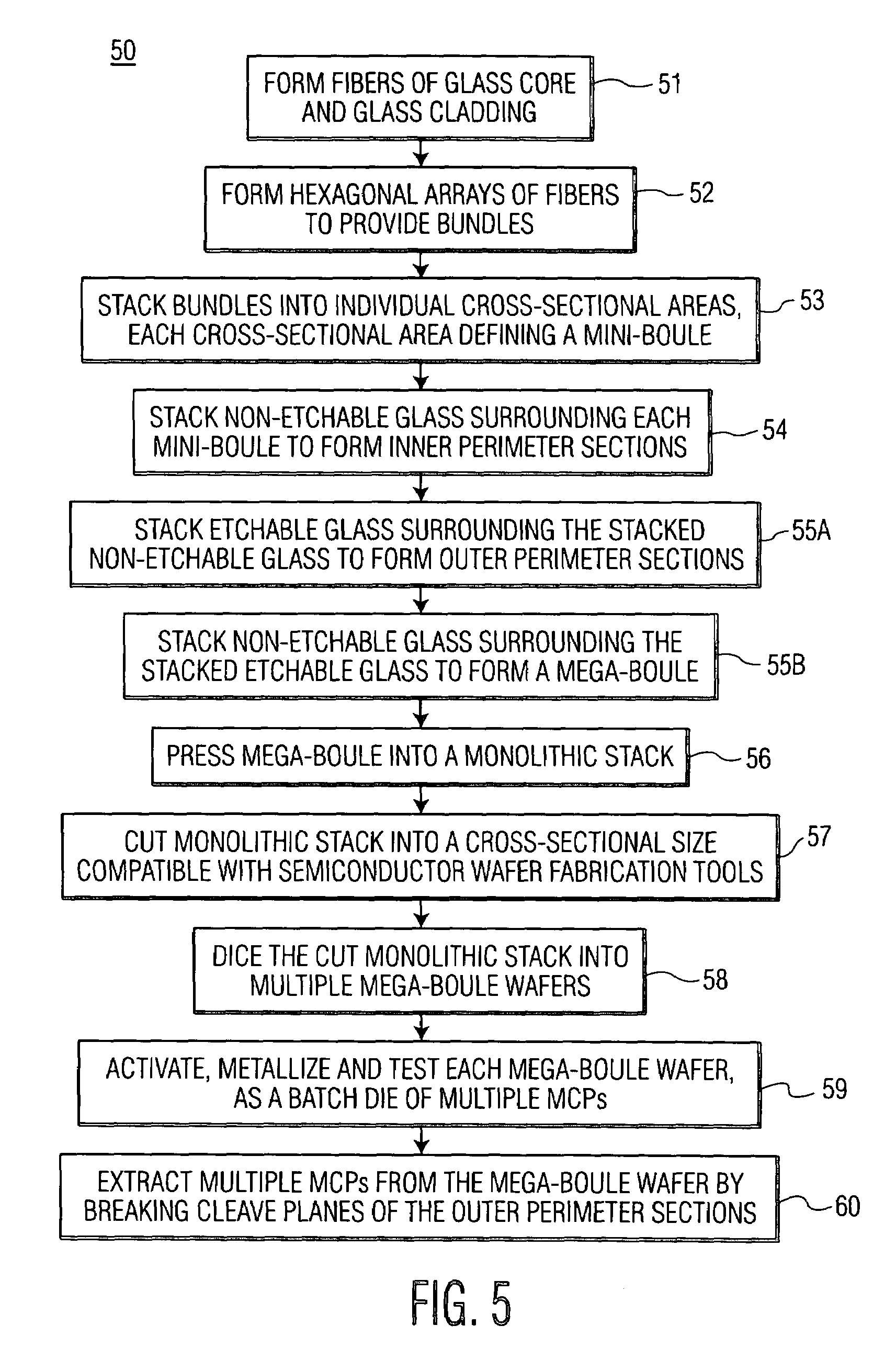Perforated mega-boule wafer for fabrication of microchannel plates (MCPs)
a mega-boule wafer and microchannel technology, applied in the field of microchannel plate fabrication, can solve the problem of large touch labor for a part that is sensitive, and achieve the effect of sufficient cross-sectional width
- Summary
- Abstract
- Description
- Claims
- Application Information
AI Technical Summary
Benefits of technology
Problems solved by technology
Method used
Image
Examples
Embodiment Construction
[0035]The present invention relates to forming a plurality of MCPs by using a method amenable to conventional wafer fabrication tools. More specifically, an embodiment of a method of the present invention is shown in FIG. 5, and is generally designated by reference numeral 50. As will be explained, the method forms a batch die for making multiple MCPs from a single large wafer. The single large wafer, referred to as a mega-boule wafer, is sized to be accommodated by conventional wafer fabrication tools.
[0036]Referring now to FIG. 5 and beginning with step 51, fibers of glass core and glass cladding are formed by method 50. Starting fiber 10 is shown in FIG. 1 and includes glass core 12 and glass cladding 14. Core 12 is made of material that is etchable, so that the core may be subsequently removed by etching a mega-boule wafer, in accordance with the present invention. Glass cladding 14 is made of glass that is non-etchable under the same conditions that allow etching of core 12. Th...
PUM
 Login to View More
Login to View More Abstract
Description
Claims
Application Information
 Login to View More
Login to View More - R&D
- Intellectual Property
- Life Sciences
- Materials
- Tech Scout
- Unparalleled Data Quality
- Higher Quality Content
- 60% Fewer Hallucinations
Browse by: Latest US Patents, China's latest patents, Technical Efficacy Thesaurus, Application Domain, Technology Topic, Popular Technical Reports.
© 2025 PatSnap. All rights reserved.Legal|Privacy policy|Modern Slavery Act Transparency Statement|Sitemap|About US| Contact US: help@patsnap.com



